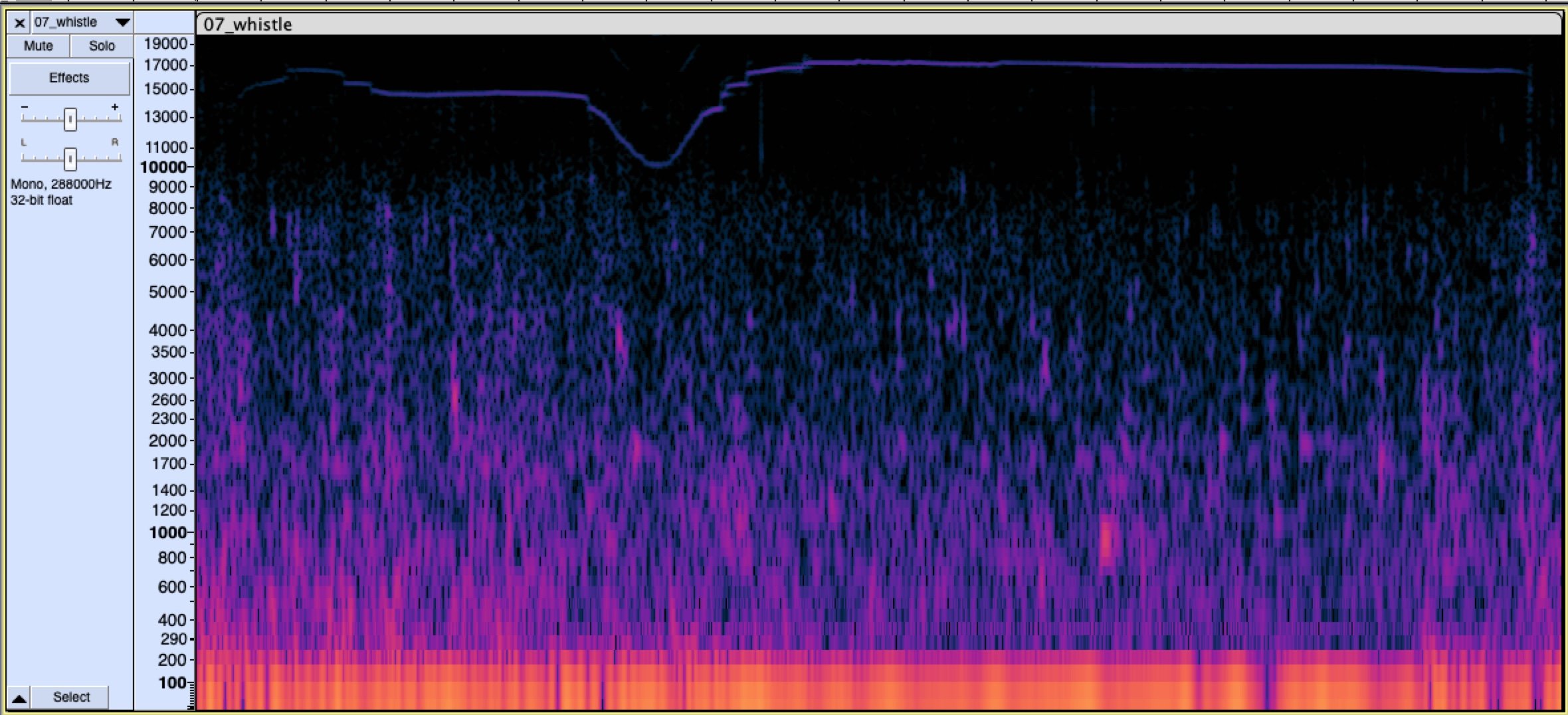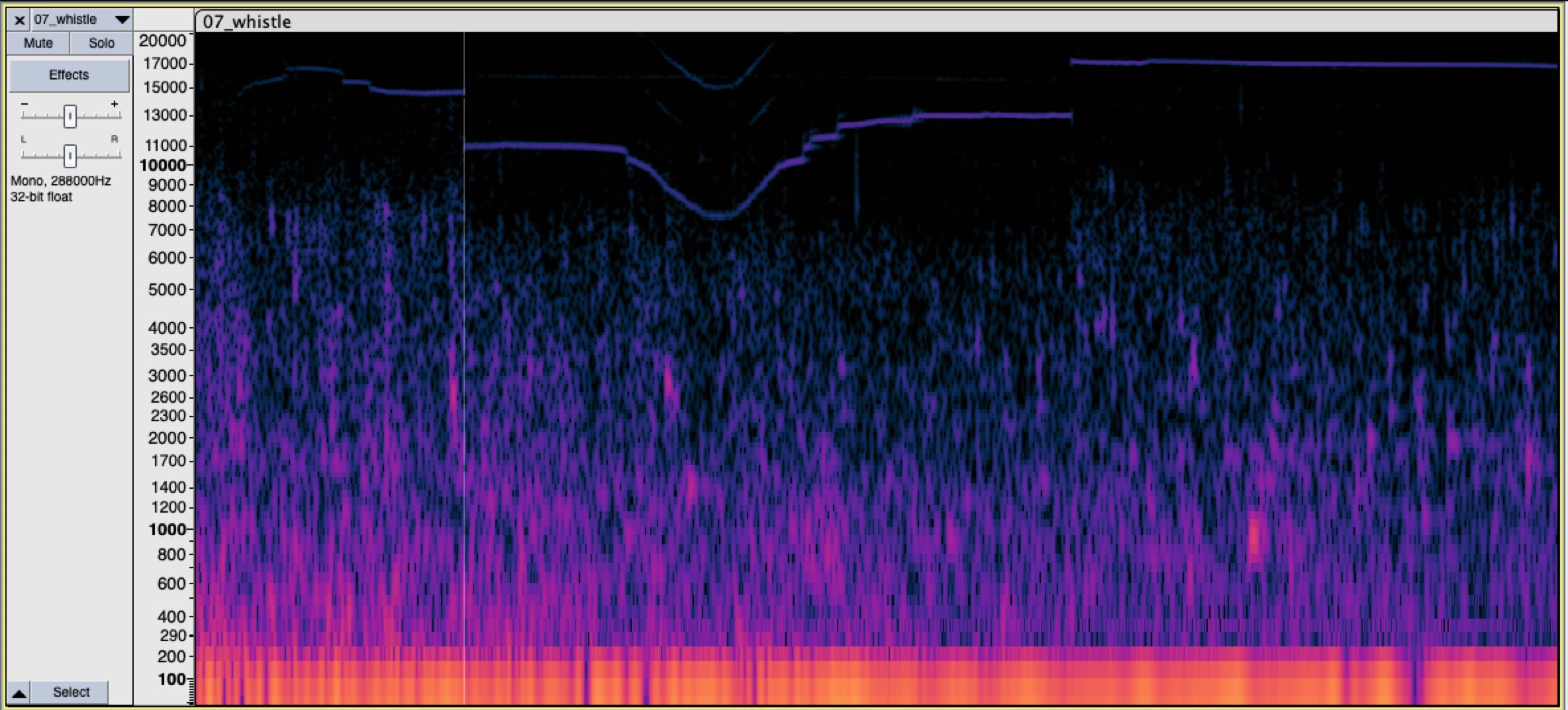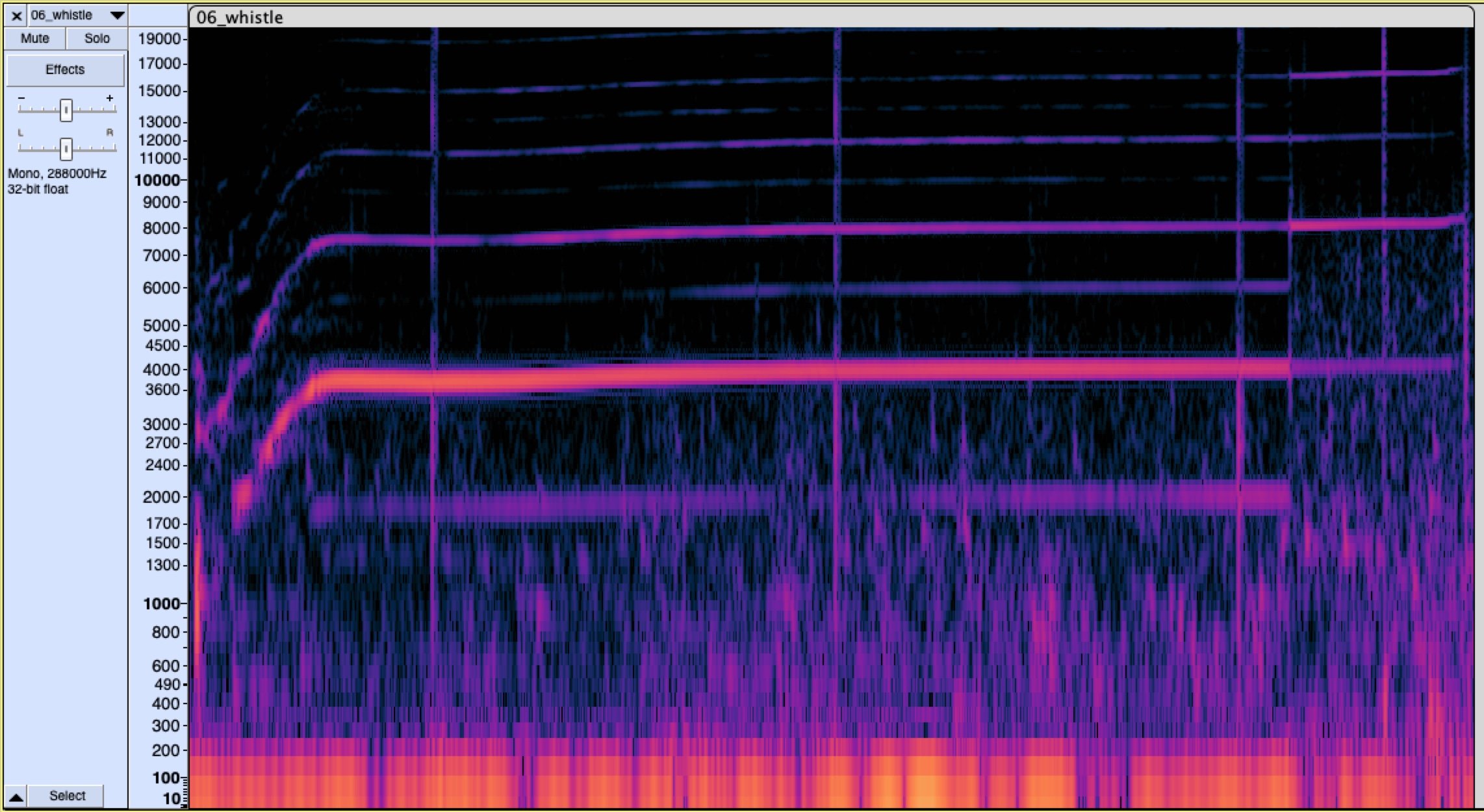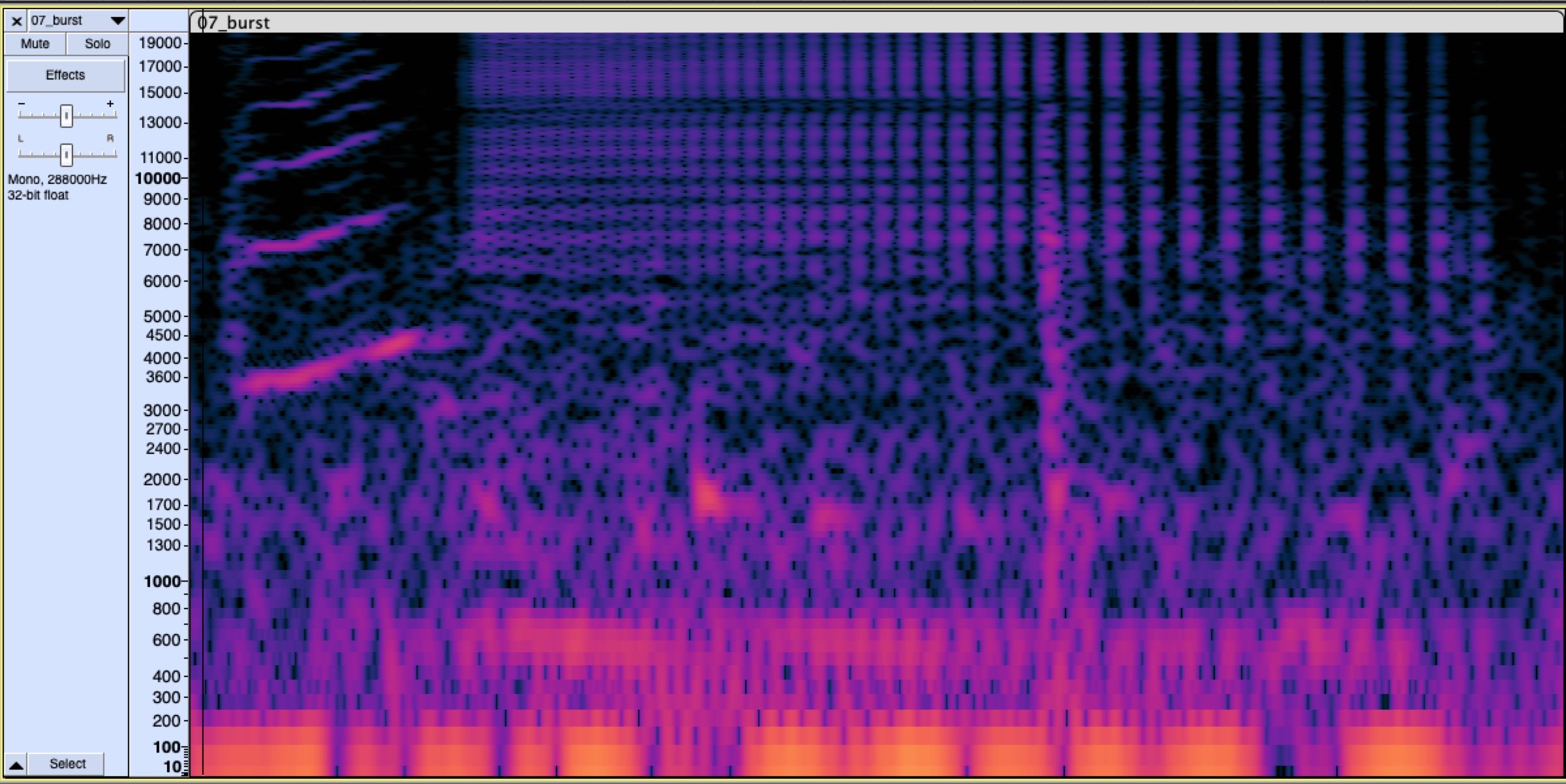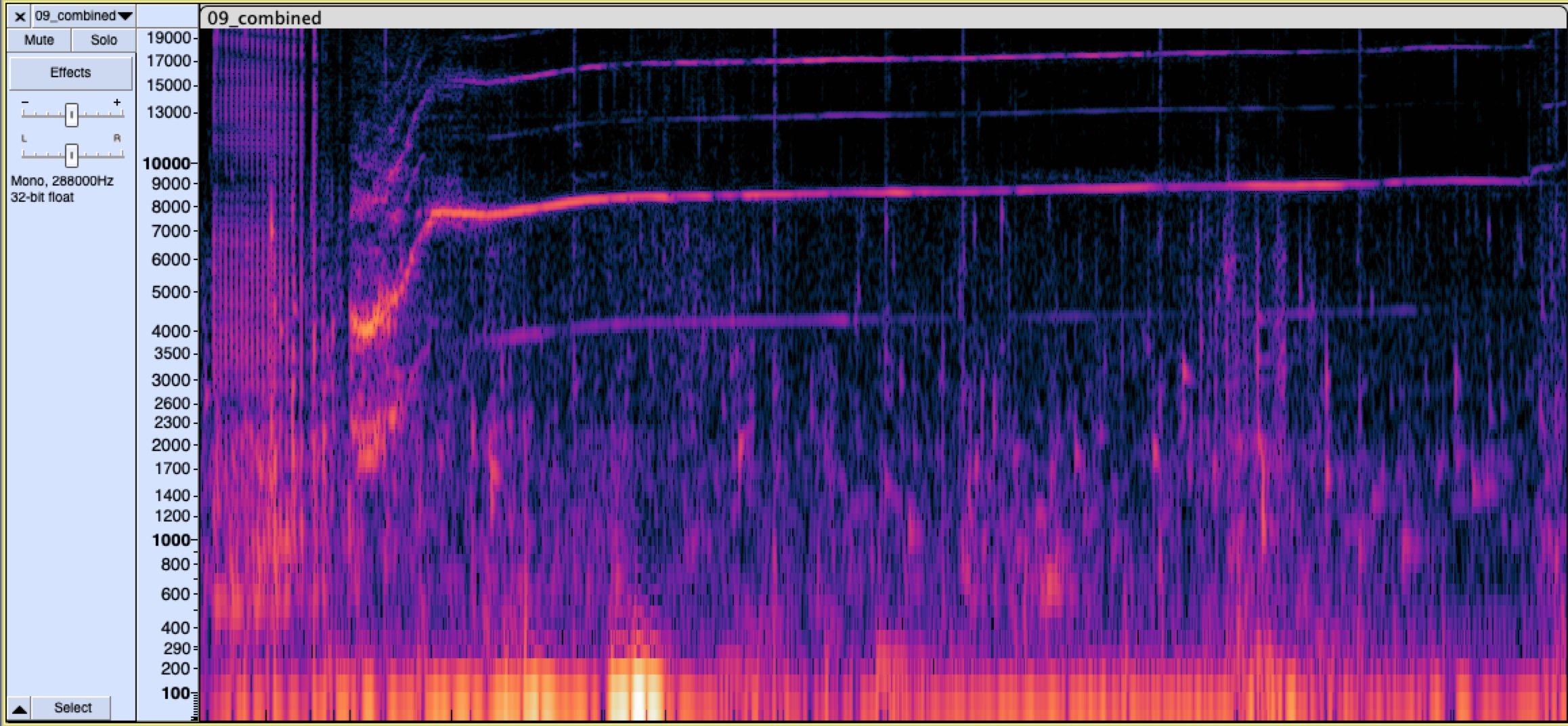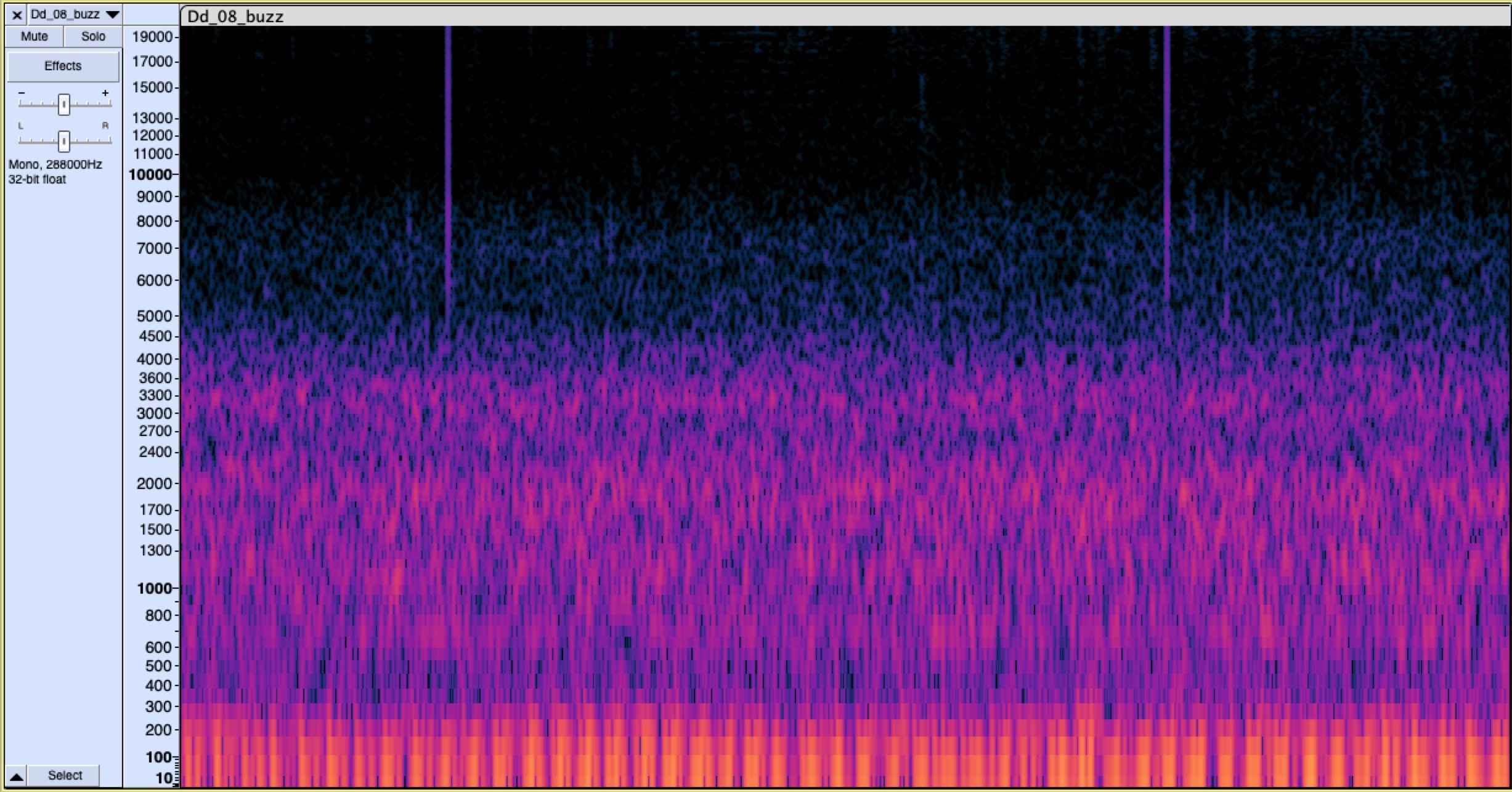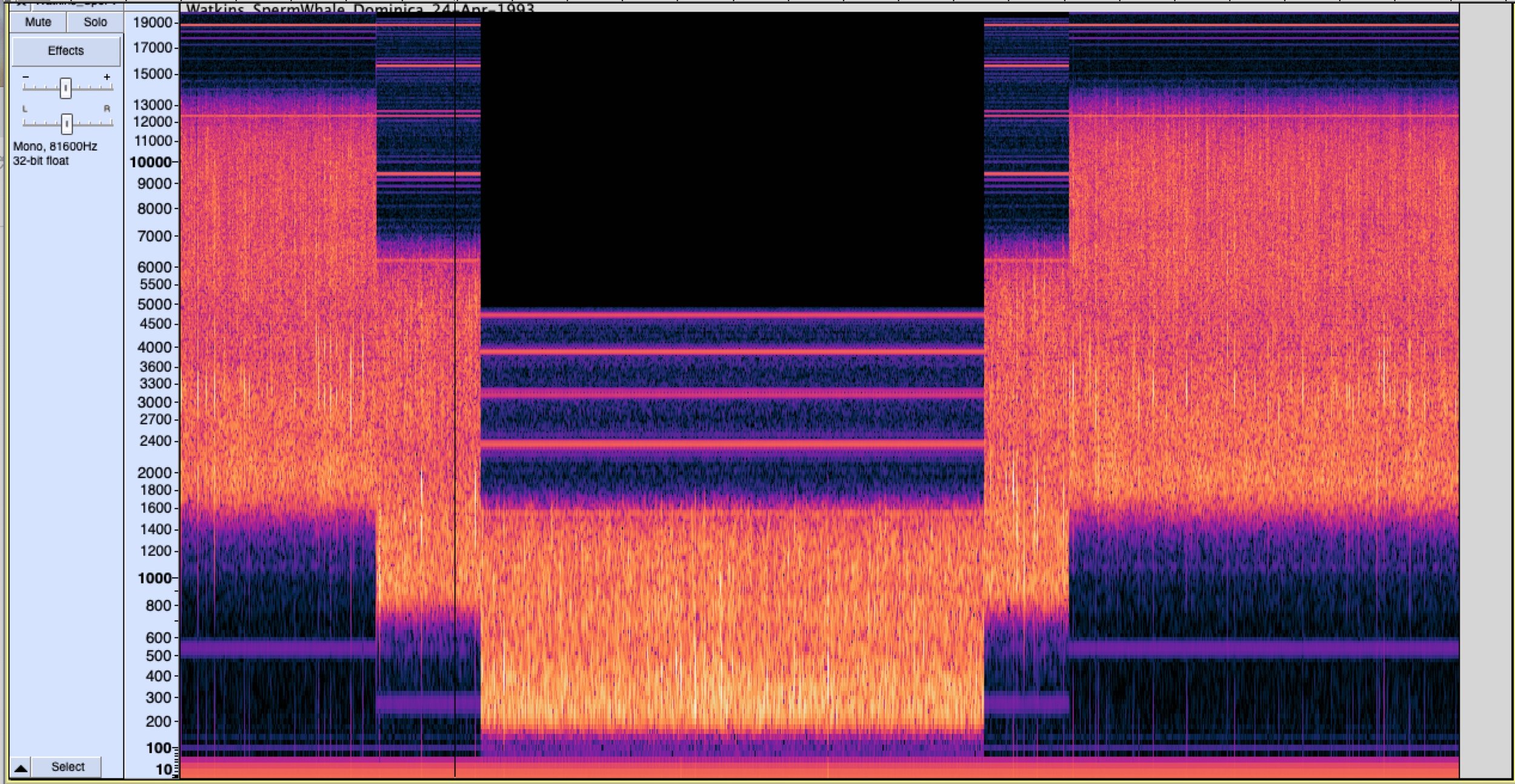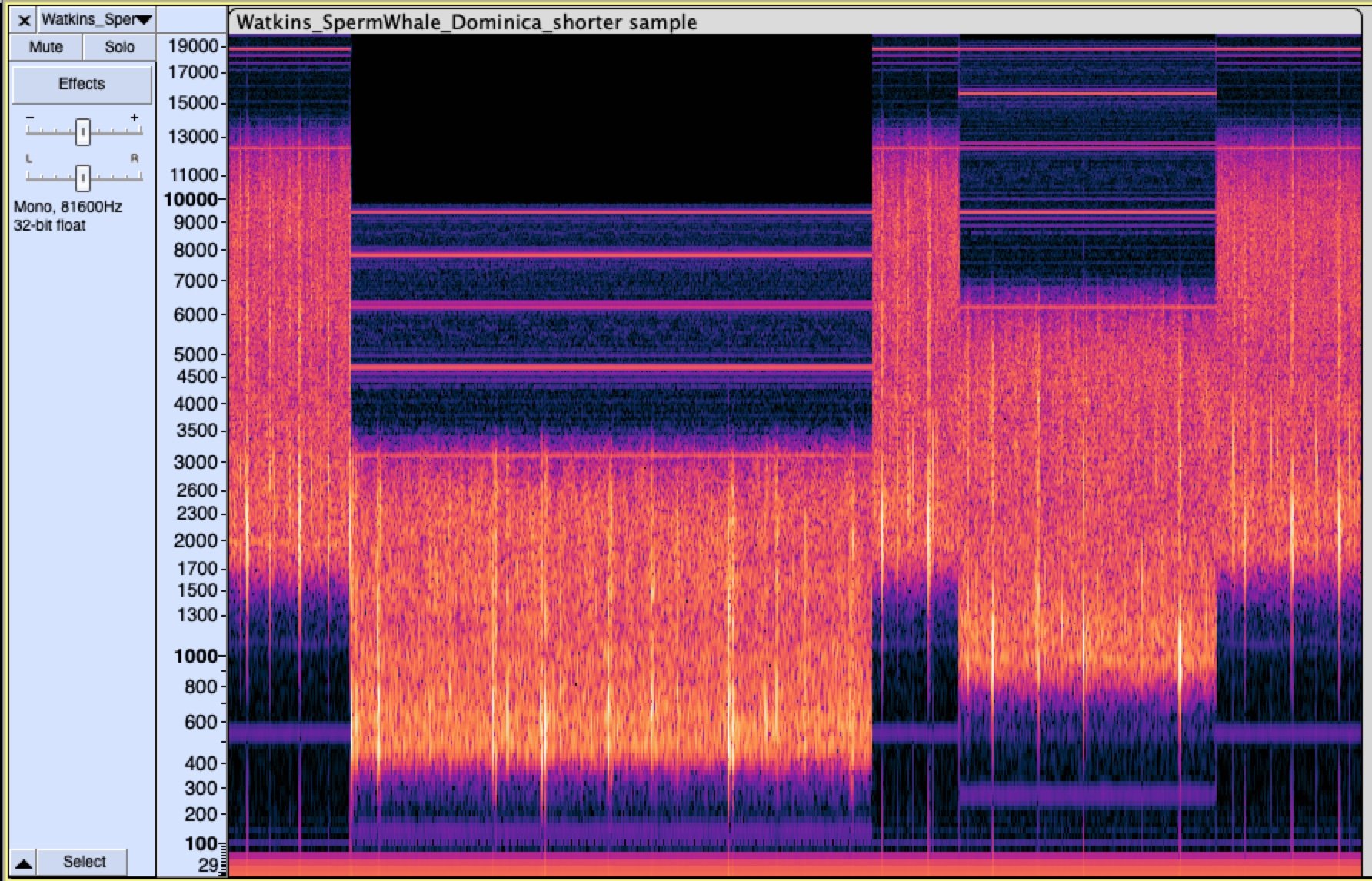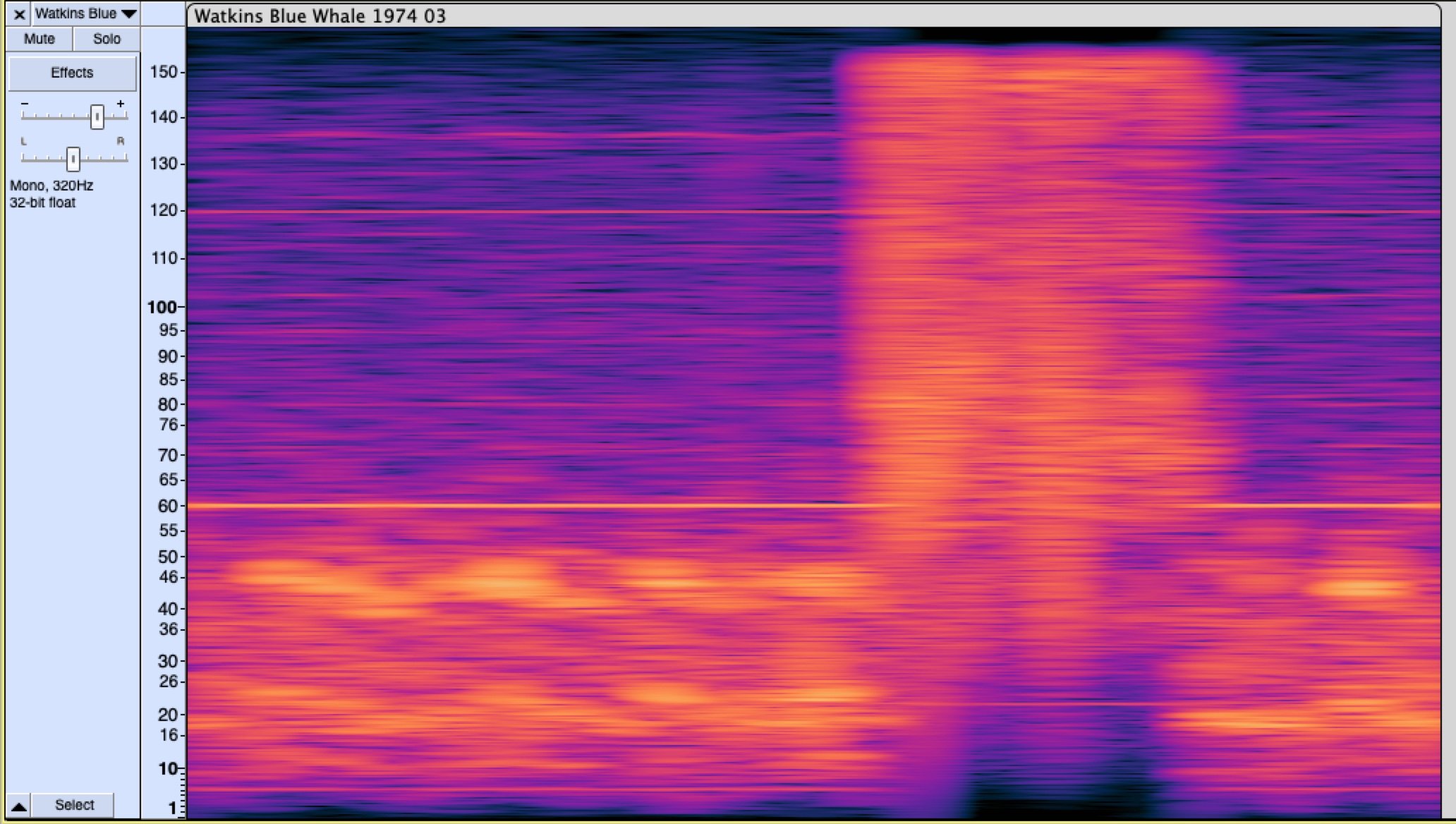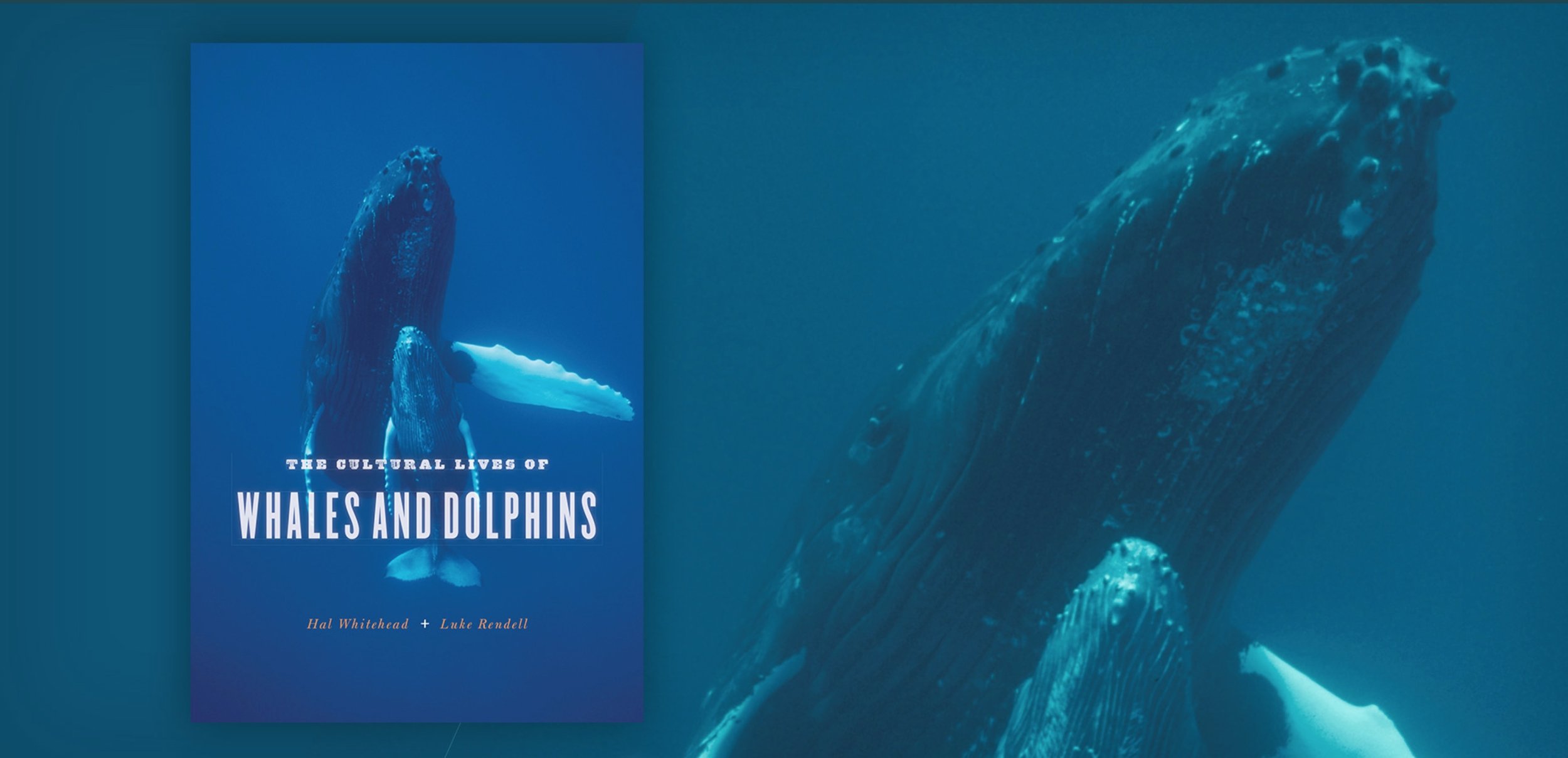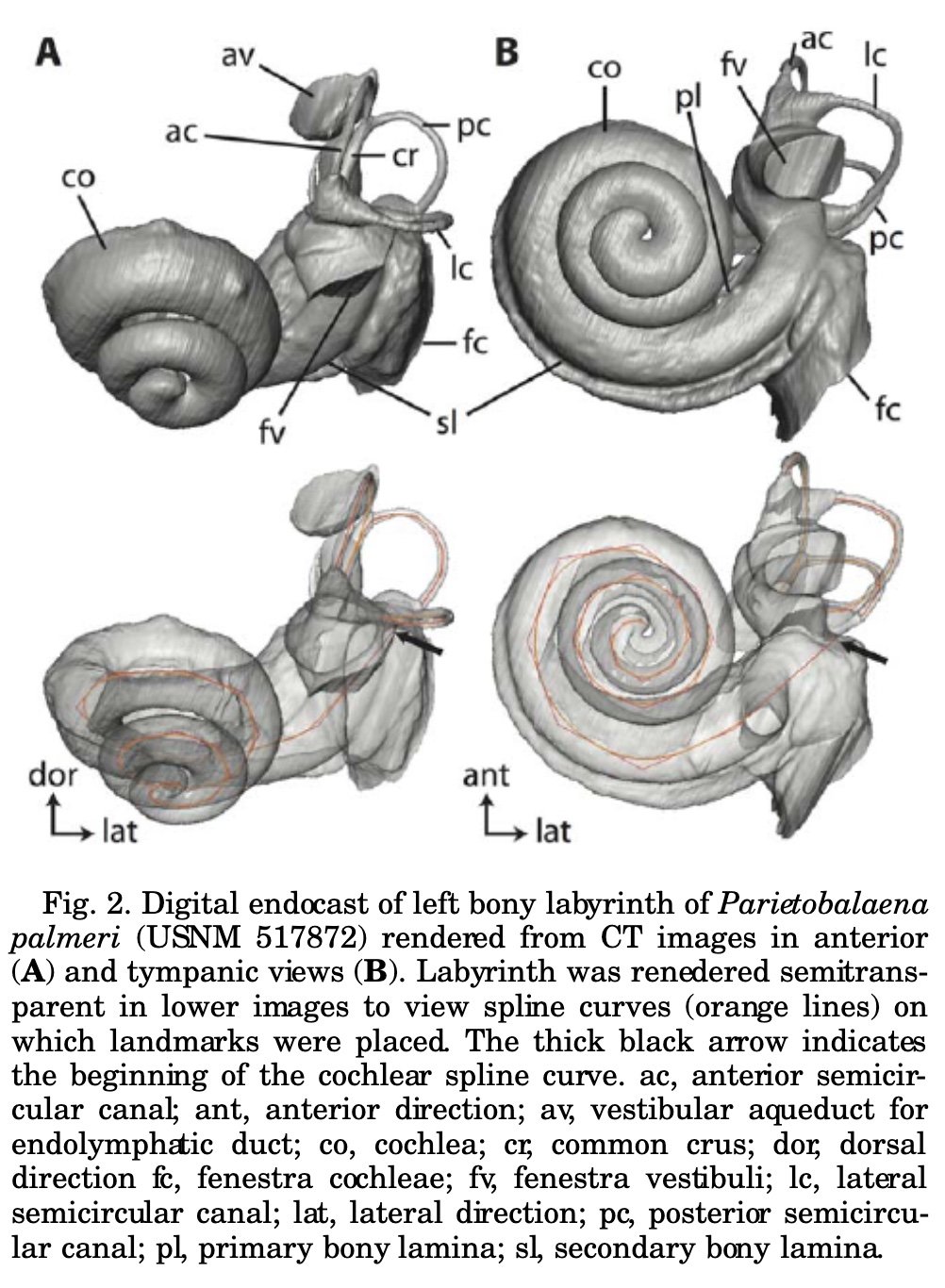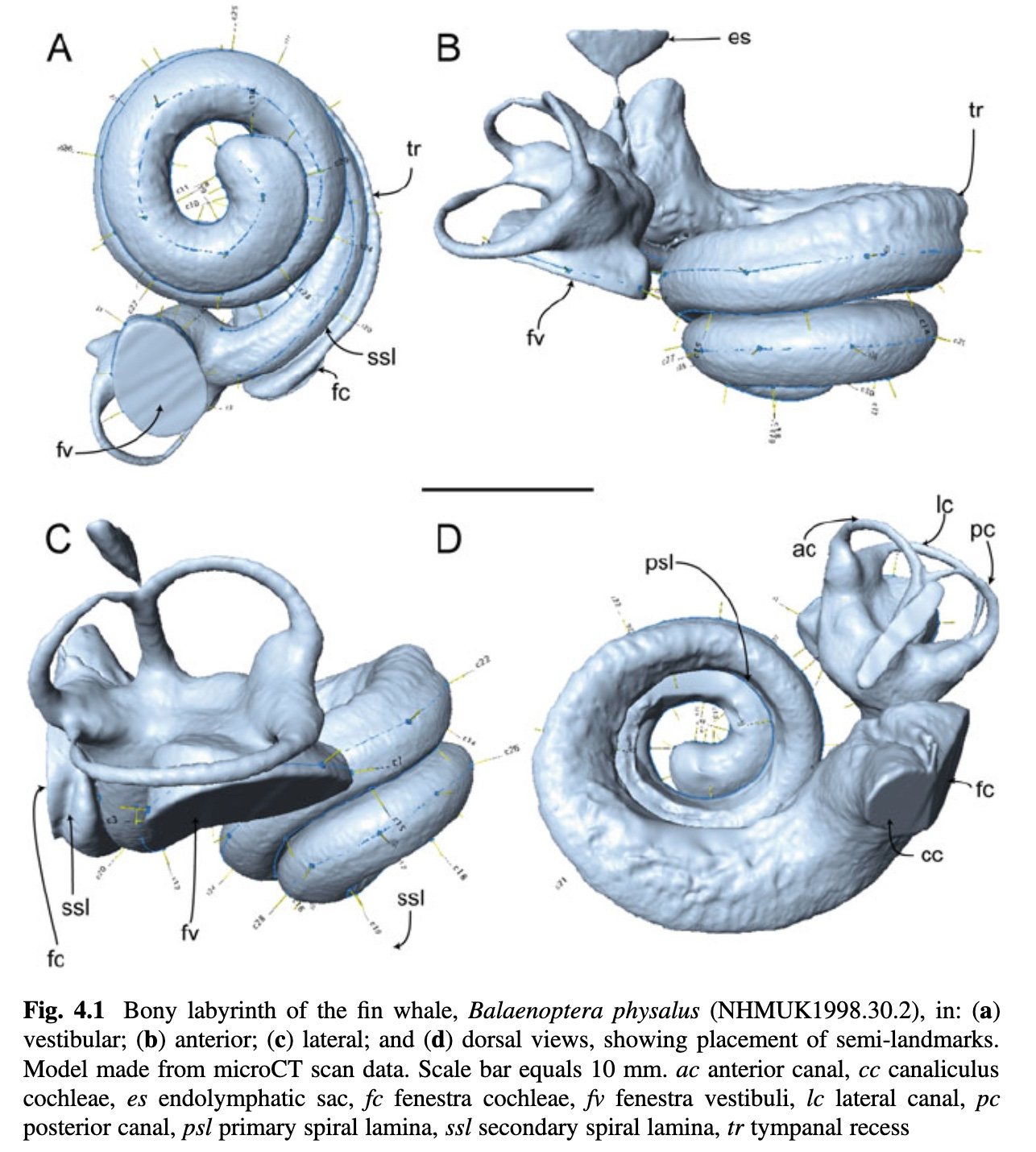Monday
In my conversations with Laura Redaelli, she made it clear that she does not work directly from her audio data. She uses visual representations known as spectrograms that show the different frequencies captured by the sample on the vertical axis, using colour to indicate intensity of signal. After a quick examination of the samples Laura provided to Marko, by using the spectrogram view in Audacity, it’s obvious why she uses this form of visual representation to analyse her data rather than her ears.
In the first image (above), you can see the whistle of a short-finned pilot whale (Gma), as a long line which dips between 17000 and 10000 kilohertz, well above the frequencies occupied by the splashing water sounds. However, this high frequency sound is completely inaudible to my ears when played at normal speed. All I can hear is the splashing of water.
In the second image (below), I slowed a segment of the sample down by 0.75% and now the pitch drops low enough (to between about 11000 and 7000 that I can easily hear the whistle.
And even the following (whistle 06), which is audible without a speed/pitch change, is perhaps a little richer to listen to after a 50% slow-down as well.
Here are two more examples of dolphin sounds. The first is a ‘burst’, which sounds like a creaky kind of squeak to me, and a combined sample showing whistles and bursts.
Interestingly, in the common dolphin ‘buzz’ sample pictured below. Not only is it difficult to hear anything until the audio is slowed down, it’s also difficult to see anything. The first image and mp3 is normal speed, the second is slowed to 0.250%.
SPERM WHALES
The clicks of these whales sound quite uninspiring at first, compared to the more relatable and seemingly varied whistles of their dolphin neighbours. But if I think of them as a rhythm section. A timpani of finger snaps and tongue clacks, I can start to feel their patterns in a more bodily way. I started experimenting with slowing everything down to 0.200%. Sound travels five times faster in water than air, so this experiment is in the hope of getting more of a sense of the richness of these sounds according to a human sonic temporality.
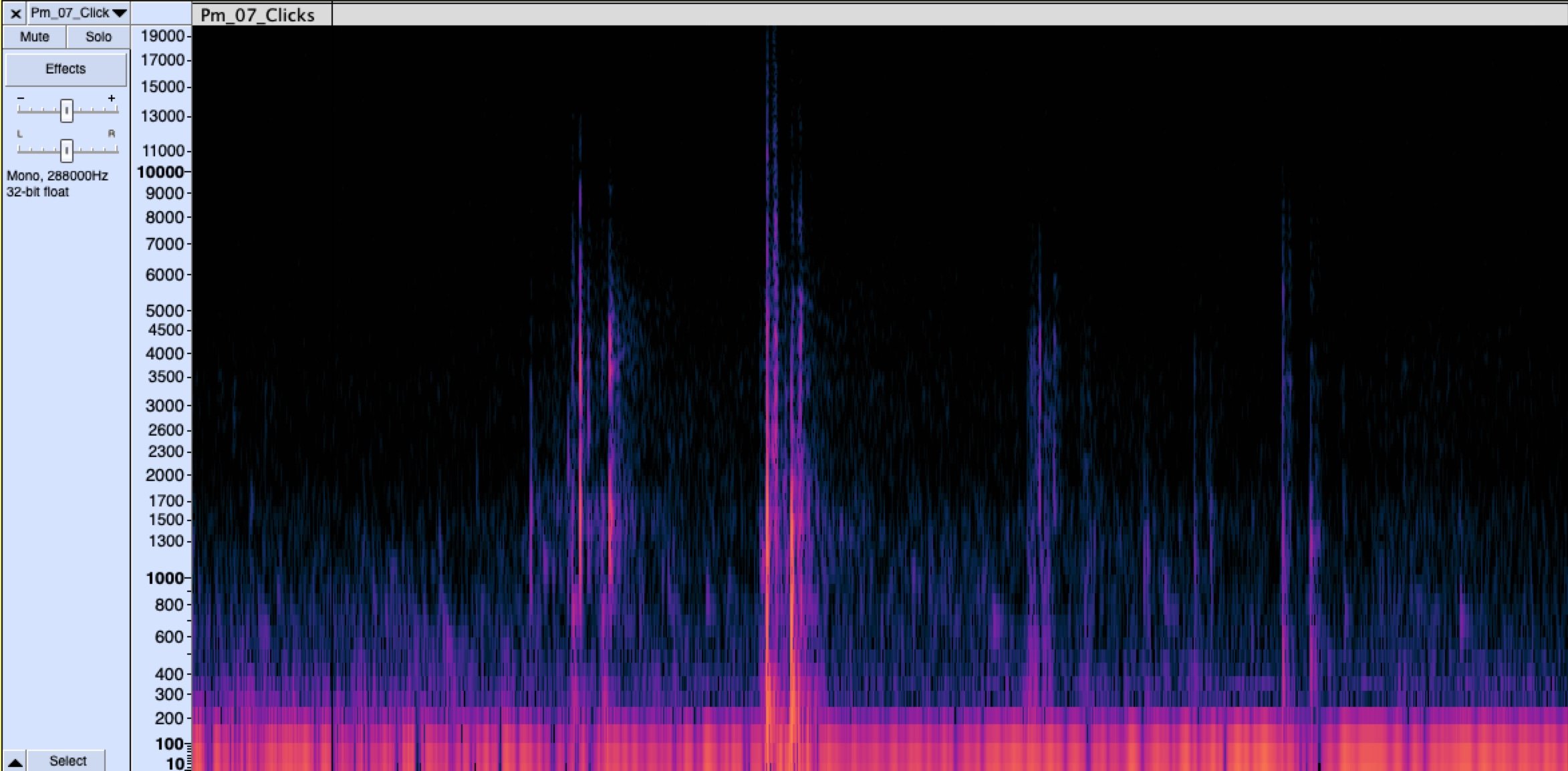
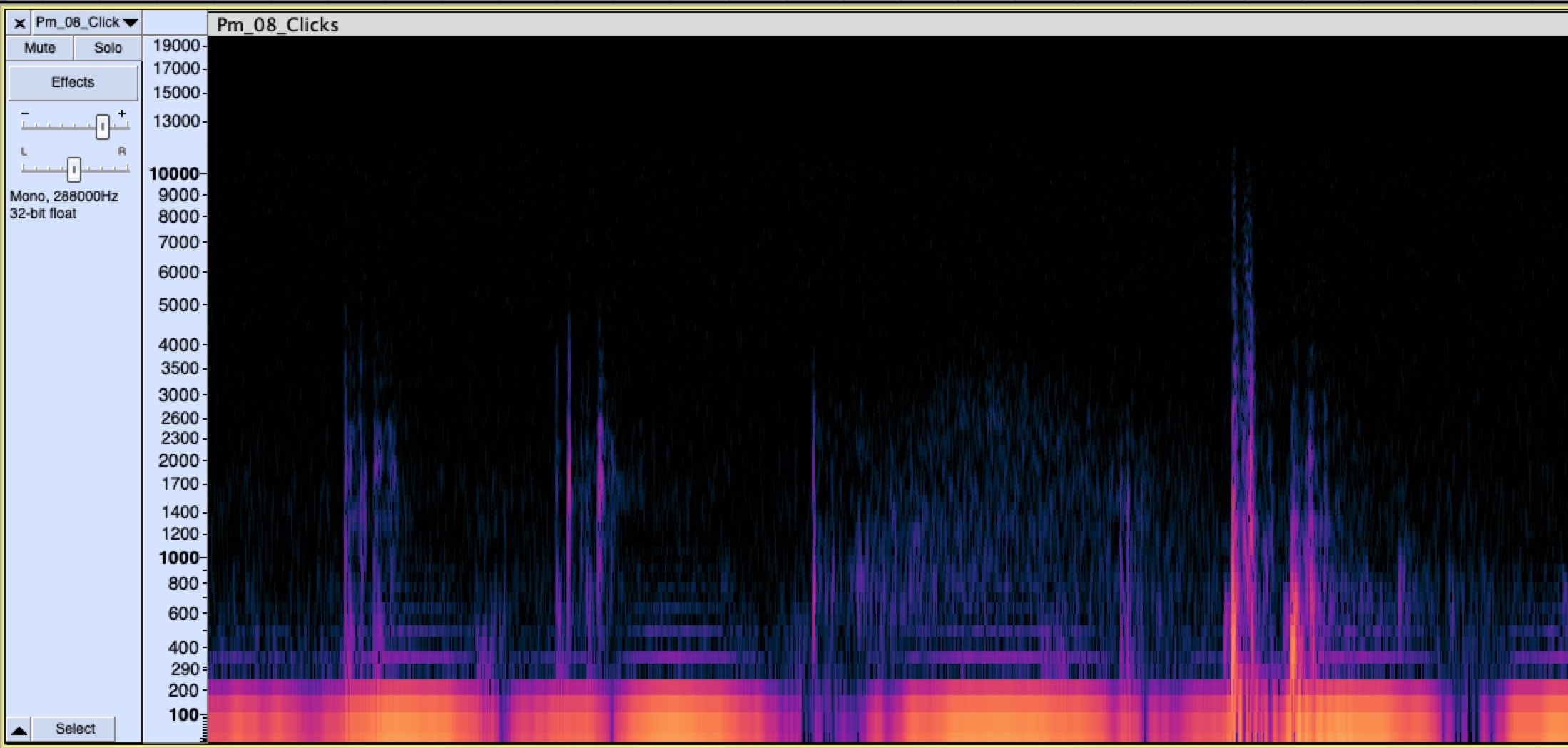
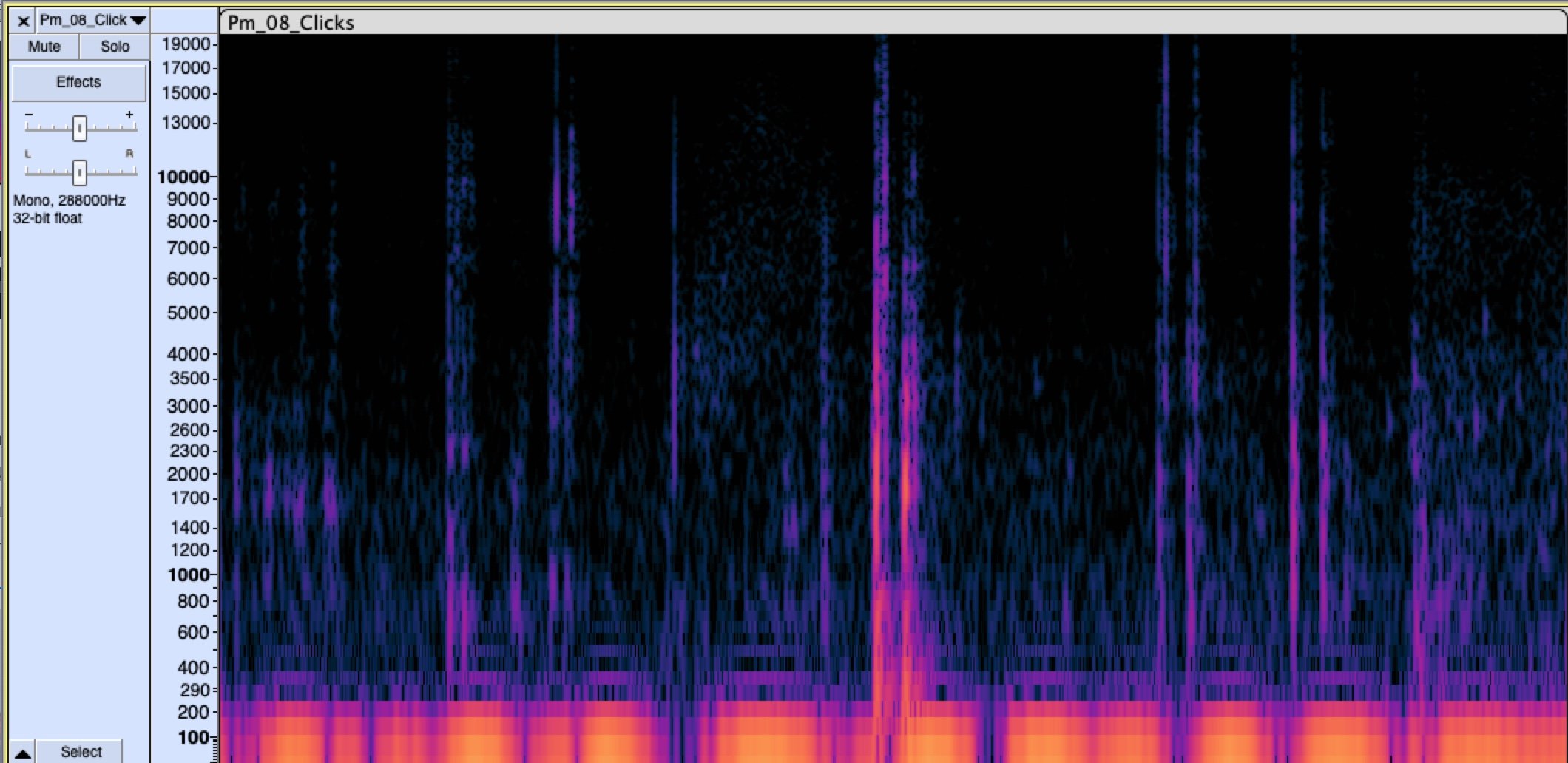
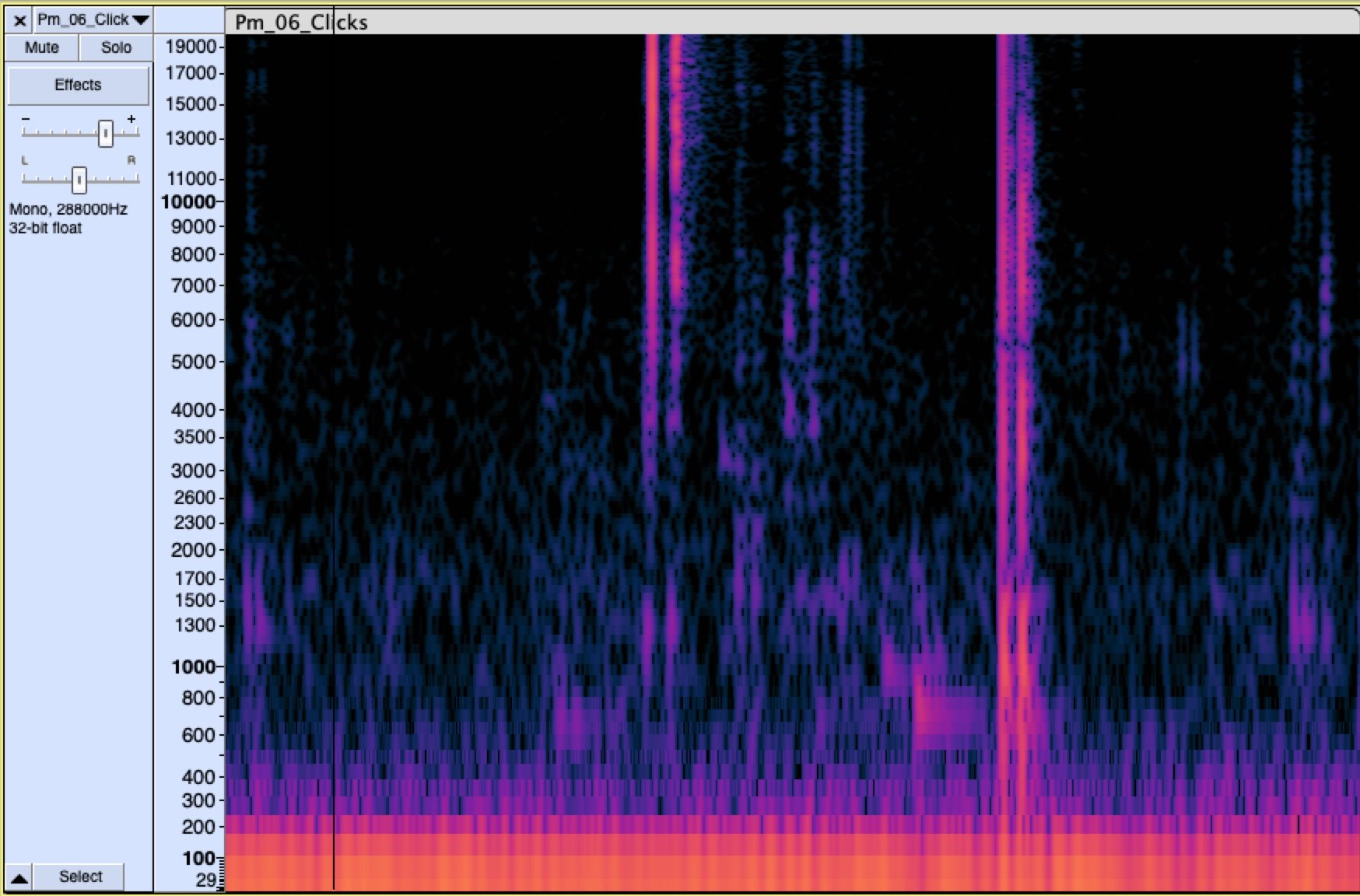

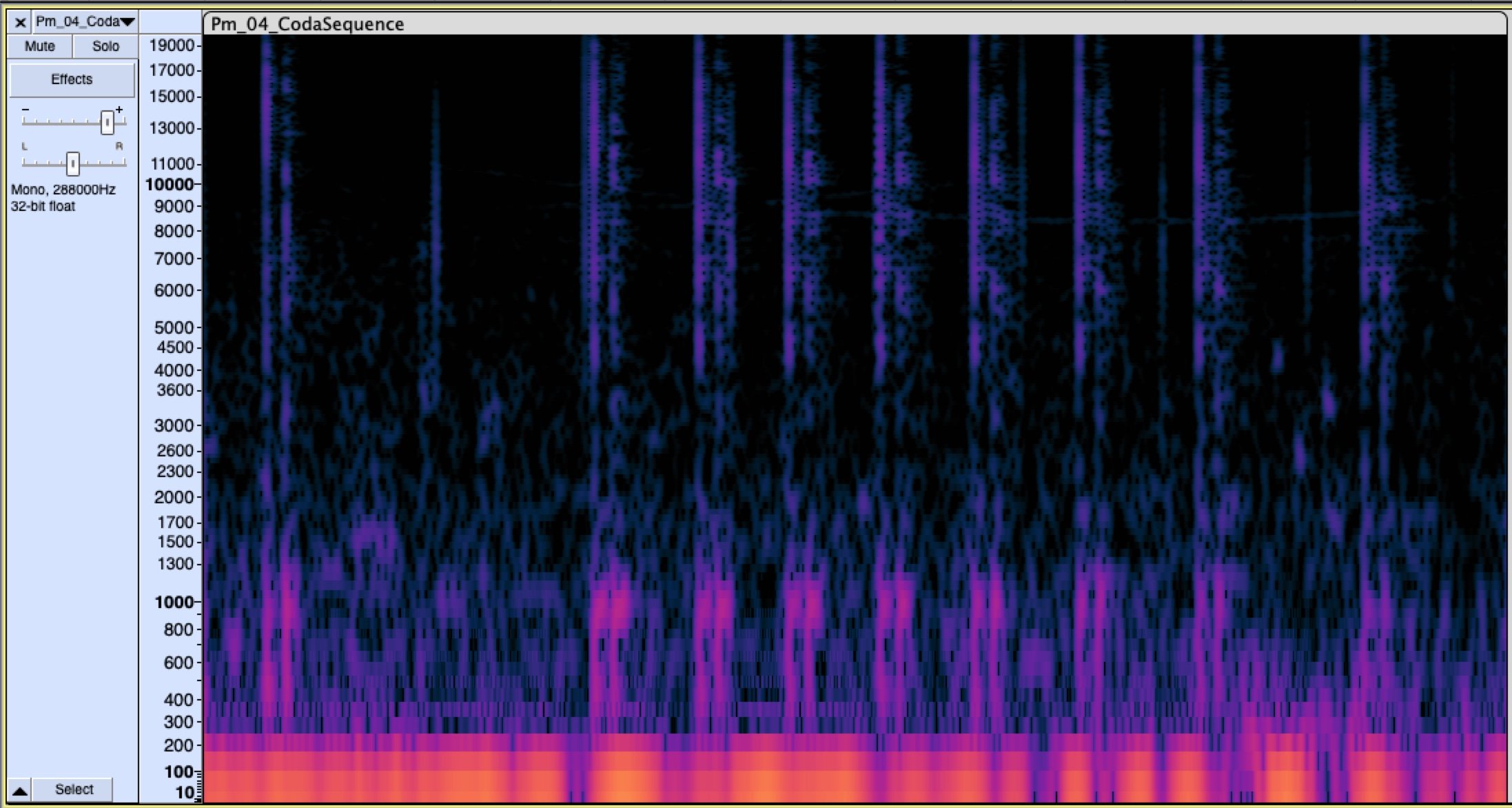
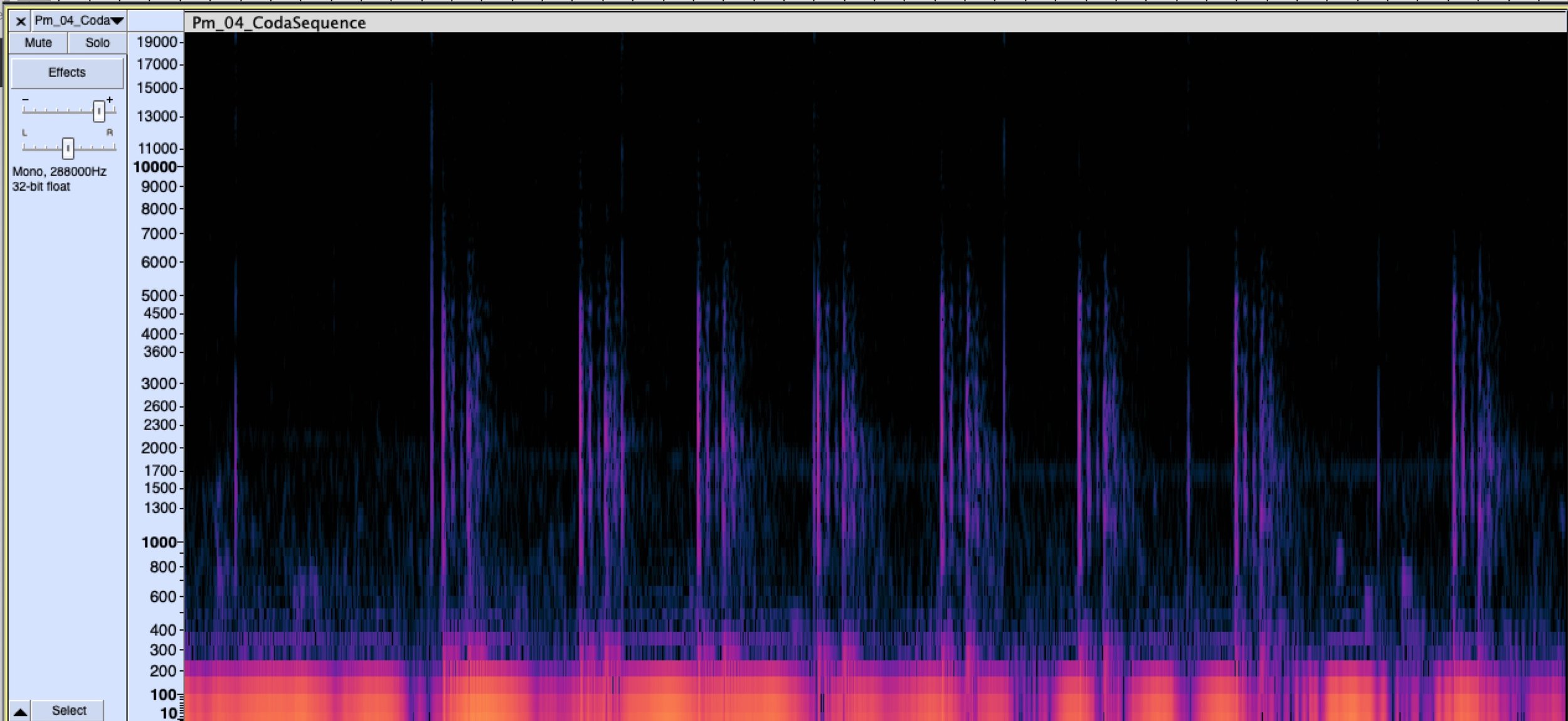
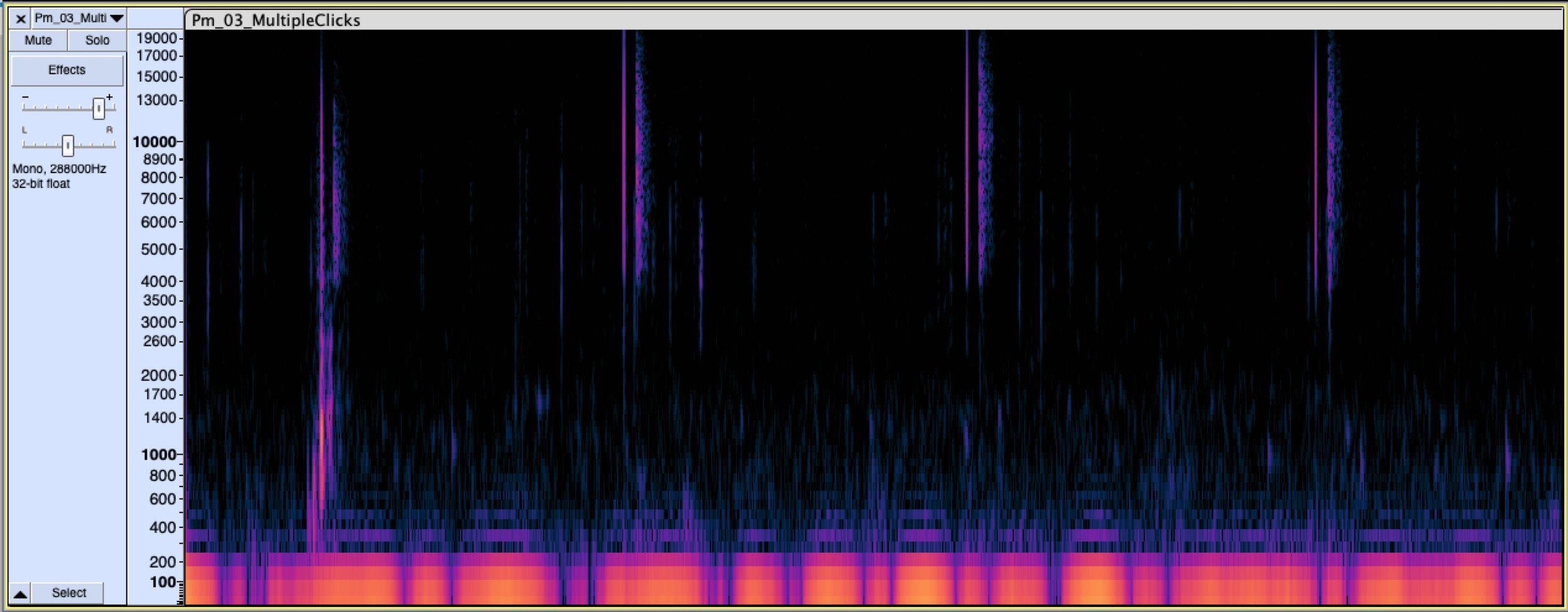
Here’s a long sequence from the Watkins archive of a sperm whale recorded off Dominica. The first part of the audio is at normal speed, then it moves to half speed (0.500%) and then one fifth speed (0.200%). Unfortunately, presumably due to the contemporary tech (tape!) they are not as clean as Laura’s samples and there’s quite a bit of whine and distortion on the slowed samples, but it’s still interesting I think.
The following sample’s rhythms are so interesting that nothing is really gained by slowing it down in this case. The impressive part is the complexity of the rhythms at their normal speed.
This Watkins archive Blue Whale recording shows a lot going on at the low frequency end but it’s barely audible, and speeding it up didn’t make as much difference as I’d imagined. I quite like the feeling of absolute depth it gives you as you ears strain to hear this very low frequency sound. Perhaps if I can find a way to peed it up without re-pitching it it might be more legible - but it’s not obvious how to do this in audacity - the choices are speed and pitch or just pitch, not just speed. As far as I remember this is possible in logic thought..
This below sample is perhaps a little easier to hear.
IDEA:
Think about the possibility of some kind of a clapping, clicking percussive piece with slowed down sperm whale calls.
tuesday
Read about sperm whale clan ‘culture’ and how evidence has been found of dialect use in sperm whale codas (the repetitive clicks they use in social interaction) that indicates these can be interpreted as identity markers for groups.
Whale drummers
“…identity codas likely “serve multiple evolutionary functions within the umbrella of social bonding”, similar to human music.” p6
“Implications and Conclusions.
Symbolic marking is considered a defining trait of human cultures (5, 43). Our study provides quantitative evidence that identity codas act as symbolic markers of sperm whale cultural (i.e., clan) identity in the Pacific Ocean, with whales adjusting their vocal behavior in ways that could reaffirm their cultural identity in areas of high spatial overlap. The distributional scales and trends seen in Pacific sperm whales resemble those found in human ethnic groups (4, 6). Although we cannot know for certain how whales perceive codas or label the identity of conspecifics, the observed patterns could arise from the selection for identity signals that enable social assortment and cooperation in sperm whales, as has been shown for humans (6, 44) and suggested for other taxa (5, 37, 45, 46). Playback experiments comparing behavioral responses of whales exposed to same-clan, differentsympatric clan, or different-allopatric clan identity codas are essential for validating the patterns described here (47), but such experimental studies with wild marine mammals remain logistically challenging (48). In the interim, studies like ours that examine whether specific acoustic signals meet symbolic marker predictions can be informative for cultural species.
Collectively, these discoveries shed light on how different clans maintain behavioral distinctiveness and how cultural boundaries persist in areas of sympatry. In doing so, this work takes a key step toward understanding the evolutionary mystery of why clans exist by documenting evidence of how they may persist. A preference for interacting with individuals whose symbolic markers match your own has been favored by natural selection in humans (44). Our results suggest that the conditions requisite for the evolution of these markers exist among nonhuman animals as well.”p6
Hersh, Taylor A., Shane Gero, Luke Rendell, Maurício Cantor, Lindy Weilgart, Masao Amano, Stephen M. Dawson, et al. "Evidence from Sperm Whale Clans of Symbolic Marking in Non-Human Cultures." Proceedings of the National Academy of Sciences 119, no. 37 (2022/09/13 2022): e2201692119. https://doi.org/10.1073/pnas.2201692119. https://doi.org/10.1073/pnas.2201692119.
Found an amazing book on whale culture which I want to read. Chapter 4 - The Song of the Whale AND Chapter 6 - Mother Cultures of the Large Toothed Whales and Chapter 12 - The Cultural Whales: How We See Them and How We Treat Them and Chapter seem the most relevant - have downloaded. One of the authors, Luke Rendell, is part of MASTS, the Ocean Partnership network I’ve been attending.
FRIDAY
Conversations with Dinarte and Marko about possible collaborations. Dinarte is a designer and will be working on fabricating the dive centre kiosks but potentially more.
Marko explained dropcams: images below taken from these dropcams which use a small explosive charge to return to the surface after a programmable amount of time.
Two things have been helpful in explaining my ideas, and show what an artiist might be able to contribute to any possible collaboration.
1. There is an article called "Novelty and Utility: How the Arts May Advance Question Creation in Contemporary Research.". which explains the potential for arts collaboration with sciences in terms of developing novel questions. The diagram below has been particularly helpful.
Lehmann, Johannes, Rachel Garber Cole, and Nathaniel E Stern. "Novelty and Utility: How the Arts May Advance Question Creation in Contemporary Research." Leonardo 56, no. 5 (2023): 7. The MIT Press. https://muse.jhu.edu/pub/6/article/909000.
2. This blog and my padlet for the residency which allow me to show visuals quickly to reinforce the ideas I am explaining. This is an obvious idea if you are workign in the creative industries but for me, since I’m used to working alone, I don’t always need to show early ideas visually. A picture does tell a thousand words. Note to self: remember this for communicating about PhD.
The search continues for the best stl file to make a 3 d print of fin, blue or sperm whales inner ear structures. Francisco has found and converted the otilith of an extinct whale, and I have some images of the bony labyrinth of extinct whales that give a lot of detail, but so far the best I can find of an extant animal is images of a fin whale. Hopefully I can work with Francisco to reconstruct. I also need to ask Victor or Georges who sit next to Rueben in the military drones office to help me with the 3d printing. For the prototype I think I just need to get something close enough. If the idea progresses maybe I would need to try to get in touch with Ocean Hole or somewhere like that to get the closest fit.
In the end the search is getting nowhere so I decided to go for the extinct species for the stl file and the fin whale for the bony labyrinth - see below. This is as close as practicably possible without spending days more searching. Francisco has messaged a contact and found out there is some kind of whale bony labyrinth on display at the Natural History Museum, so I will pop in there to check which one it it before we ask if we can photograph it. Also he has messaged the fin whale people (in UK) to see if they would send us the original file.
